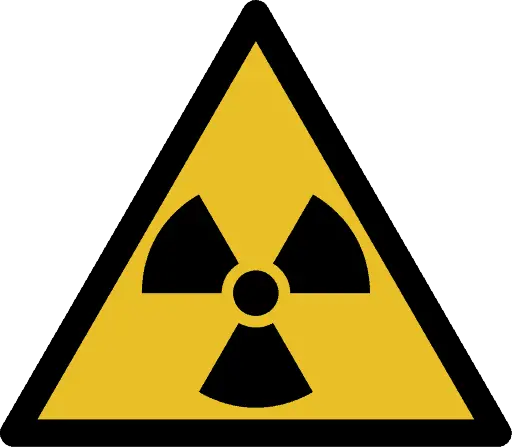
Radioactive contamination is referred to as the presence of an unwanted radioactive substances on surfaces, or within solids (including the human body), liquids or gases, where their presence is unintended or undesirable. Radioactive contamination consist of radioactive atoms (material) that have escaped the system or structure that would normally contain them. Since radioactive contamination is radioactive material, ionizing radiation is emitted by the contamination. It is very important, which material (which radioisotope) is the radioactive contaminant. It is also very important to distinguish between radioactive contamination and radiation itself.
Radioactive contamination consist of radioactive material, that generate ionizing radiation. It is the source of radiation, not radiation itself. Anytime that radioactive material is not in a sealed radioactive source container and might be spread onto other objects, radioactive contamination is a possibility. Radioactive contamination may be characterized by following points:
- Radioactive contamination consist of radioactive material (contaminants), that may be solid, liquid or gaseous. Large contaminants can be even visible, but you cannot see radiation produced.
- When released, contaminants can be spread by air, water or just by mechanical contact.
- We cannot shield contamination.
- We can mitigate contamination by protecting integrity of barriers (source container, fuel cladding, reactor vessel, containment building)
- Since contaminants interact chemically, they may be contained within objects such as the human body.
- We can rid of contamination by many mechanical, chemical (decontaminate surfaces), or biological processes (biological half-life).
- It is of the highest importance, which material is the radioactive contaminant (half-life, mode of decay, energy).
Ionizing radiation is formed by high-energy particles (photons, electrons, etc.), that can penetrate matter and ionize (to form ion by losing electrons) target atoms to form ions. Radiation exposure is the consequence of the presence nearby the source of radiation. Radiation exposure as a quantity is defined as a measure of the ionization of material due to ionizing radiation. The danger of ionizing radiation lies in the fact that the radiation is invisible and not directly detectable by human senses. People can neither see nor feel radiation, yet it deposits energy to the molecules of the body. The energy is transferred in small quantities for each interaction between radiation and a molecule and there are usually many such interactions. Unlike radioactive contamination, radiation may be characterized by following points:
- Radiation consist consist of high-energy particles that can penetrate matter and ionize (to form ion by losing electrons) target atoms. Radiation is invisible, and not directly detectable by human senses. It must be noted, beta radiation is indirectly visible due to cherenkov radiation.
- Unlike contamination, radiation cannot be spread by any medium. It travels through materials until it loses its energy. We can shield radiation (e.g. by standing around the corner).
- Exposure to ionizing does not necessary mean, that the object becomes radioactive (except very rare neutron radiation).
- Radiation can penetrate barriers, but sufficiently thick barrier can minimize all effects.
- Unlike contaminants, radiation cannot interact chemically with matter and cannot be bound inside body.
- It is not important, which material is the source of certain radiation. Only type of radiation and energy matters.
There is one common feature, natural radiation and natural contaminants are all around us. In, around, and above the world we live in. It is a natural energy force that surrounds us. It is a part of our natural world that has been here since the birth of our planet. All living creatures, from the beginning of time, have been, and are still being, exposed to ionizing radiation. Natural background radiation is ionizing radiation, that originates from a variety of natural sources. All living creatures, from the beginning of time, have been, and are still being, exposed to ionizing radiation. This radiation is not associated with any human activity. There are radioactive isotopes in our bodies, houses, air, water and in the soil. We all are also exposed to radiation from outer space.
We hope, this article, Radiation versus Contamination, helps you. If so, give us a like in the sidebar. Main purpose of this website is to help the public to learn some interesting and important information about radiation and dosimeters.